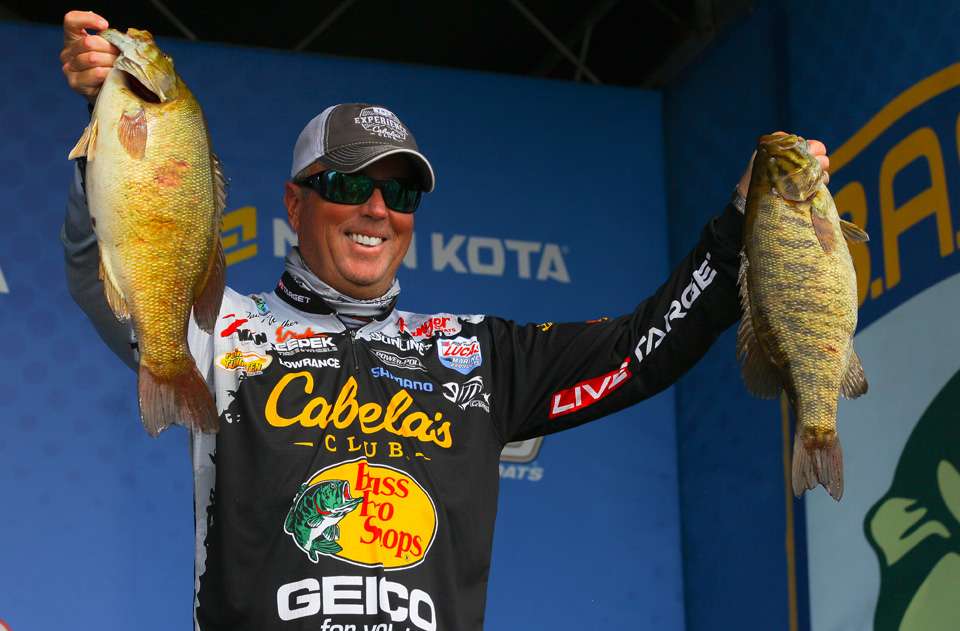
WADDINGTON, N.Y.— “I got one!” and “get the net!” are phrases commonly tied to bass fishing. When the catch is too big and lively for the hands to grab and bring aboard its time to grab the net.
You won’t hear the pros calling out for the net this week on the St. Lawrence River. That is because of the long-standing no net rule. The rule is part of the game and intended to make it even more challenging.
Laser sharp hooks and the technical aspects of rods and lines reduce the chances of losing fighting fish. So do the acquired skills of the pros, which rarely loose fish anymore at the boat.
Typically, largemouth hooked on heavy tackle can be played out and landed at the boat. Here, the prize is smallmouth on steroids. Those fish spend their entire lives swimming in current, and the forage base is healthy. They grow bigger, stronger and are getting healthier with age. St. Lawrence River smallmouth get big because angler pressure is more intense upriver on Lake Ontario.
“It seems like every year we come here the average size of the smallmouth increases,” said Randall Tharp. “They are shaped different than any smallmouth that I have ever seen before.”
That is proportionately wider in girth and shorter in length than the typical profile of a smallmouth. Those body dimensions add muscle where it matters. The fish don’t tire easily, make hard-charging runs and hook throwing acrobatic leaps, just when you think they are ready to land.
That means a solid hook set is only the beginning of the battle. Winning it takes a developed skill—and a lot of luck—to avoid losing a prized catch. There is no anticipation. It must be done in the moment.
Little attention is paid to the normally obscure rule, but this week is an exception. Hooking percentage is the buzzword of the week.
“This week it plays a huge factor, because this tournament could come down to ounces with the weights so tight,” said Matt Lee, the leader on Thursday with a 5-bass limit weighing an astounding 27 pounds, 12 ounces.
“Over time I’ve found out sitting in the driver or passenger seat and scooping them up is the easiest way to land a big smallmouth,” he said. “Everybody is different and has their own style of doing it.”
David Walker’s style is similar. He scooped a limit of smallmouth weighing 27-12 to take second place.
“These smallmouth are shaped like footballs, and you have to handle them like footballs,” he said. “You just can’t lip them because there is so much body mass.”
Walker also credits a longer, spongier action rod for allowing give and play at the boat.
“That action is like a shock absorber and you need it with the strength of these fish in the current,” he explained.
That makes rod action the compromise for having the benefit of a net.
“A net is a two-man job and it works best with a trusted partner who knows your fishing style,” he said. “If it’s a one-man task then you can get yourself in big trouble.”
Walker believes the no-net rule has a purpose, although high-tech tackle systems of today tilt the odds in favor of the anglers. So does experience.
“We’ve been doing this for so long there is a technique to it,” he said. “How to play the fish, when it’s time to bring it aboard and how to do it.”
Tharp best summed up how the week might go.
“I think we could see 100 pounds win it,” he said. “And these smallmouth tournaments can come down to ounces, so it could be any man’s game.”
To achieve that lofty goal will most definitely take both hands to bring aboard the winning weight.

